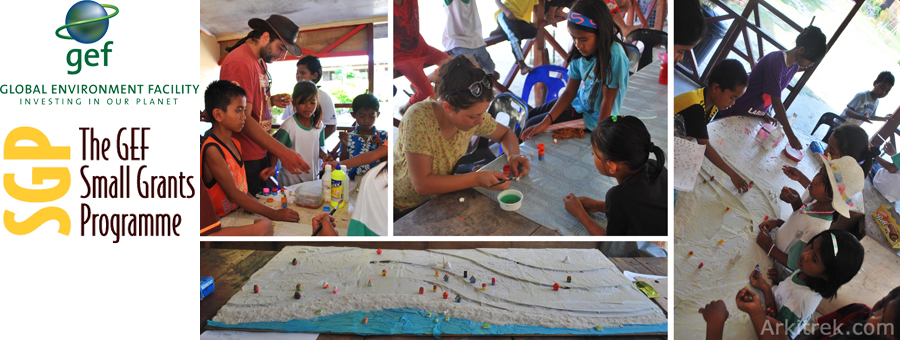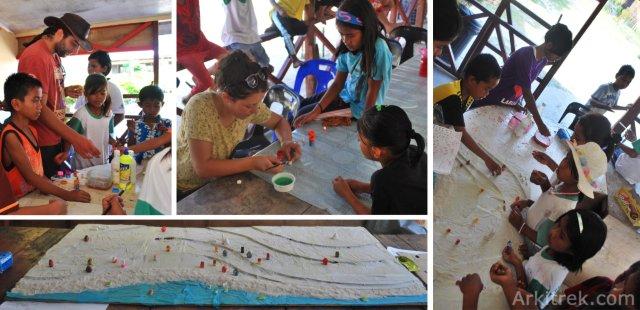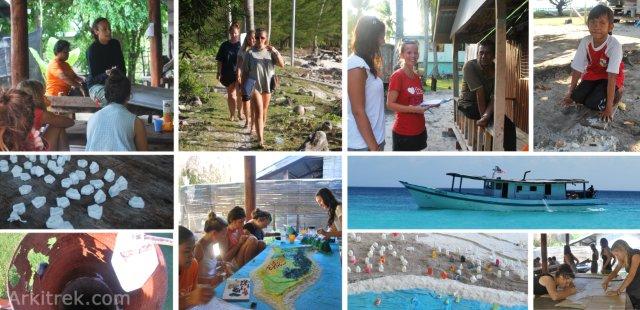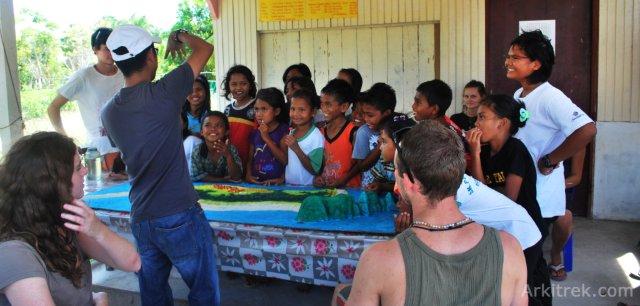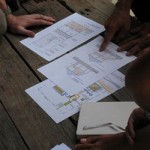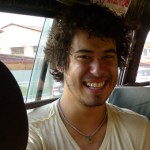Mantanani Groundwater
In March 2009 Arkitrek founder, Ian, had a conversation about rainwater harvesting with Albi, the headman of Mantanani Island. The outcome of the conversation was that Ian backed down on his sustainable design principles so as not to get off on the wrong foot with the headman.
4 years, six buildings and lots of camaraderie later, Arkitrek are embarking on an 18-month program to engage the community of Mantanani to measure and understand their freshwater resources. The program is funded by the UN Small Grants Program and will be run jointly with our long term partner on Mantanani; Camps International. Most importantly however, it has the blessing of Albi, even if he is still sceptical about rainwater harvesting.
Rahim Mudin describes our first SGP funded workshop on Mantanani
The objective of the workshop was to assess the extent of awareness among the villagers of Mantanani Island towards their freshwater quality and their concerns about the possibility of the depletion of freshwater resources and the impact of using contaminated water.
Two activities were completed; survey households on the island and build a model of the Island and Kg. Padang (the largest of the two villages on Mantanani). Both of these activities involve 18 volunteers from Camps International and school kids at SK. Pulau Mantanani.
For the survey activity, volunteers were divided into 3 groups of 3 people and 1 translator to do the survey of the villages and 5 days (every afternoon 3:00 – 6:00pm) were allocated to do the survey. During a period, a total of 122 surveys were done.
Through these activities, we had an indication of the population responses to fresh water issues in Mantanani. Although many people gave their opinion that the water is in good condition and is at no risk of ever being contaminated, there are also some individuals who believe that the fresh water resources will be exhausted if the activity of controlling and protecting of resources is neglected. At the end of the survey, most of islanders said they were willing to help in maintain the cleanliness of water resources in their area.
For model making activity, volunteers were assigned to complete the island model scaled at 1:20,000. Subsequently, a larger scaled model for Kg. Padang was made. 4 days (every afternoon) were allocated to finish both models. Involvement of school kids has done on the last day of the workshop to help determine the position of their home on the model. They are allowed to take one house miniature that has been designed by the volunteers and to color it based on their house colour.
This activity has attracted their interest as well. An explanation was given by Rahim from Arkitrek before the activity started. The unique beauty of their island has been highlighted through an interactive model construction. The use of controls to manage water supplies on islands was also explained. This activity is seen to increase the level of their ownerships of the idea for this water resource studies.
This model will be used as a tool for discussing issues with the water on the island as well as a basis for recording data. Thank you for all volunteers at Camp Borneo and special thanks and appreciation to the villagers and students who have helped to ensure the success of this activity.

